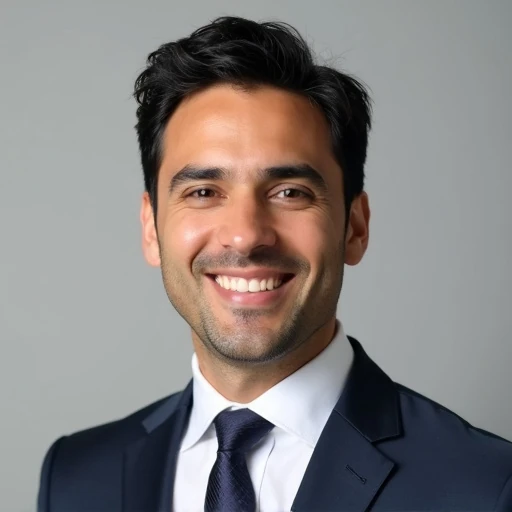Three faculty members from the University of Pittsburgh School of Medicine have been elected to the National Academy of Medicine (NAM), one of the most prestigious honors available in the fields of health and medicine. Their induction recognizes groundbreaking work in cancer treatment, virology, and space-based biological research.
The new members are John C. Byrd, a leader in leukemia research; Terence S. Dermody, a distinguished virologist and pediatrician; and Kate Rubins, a microbiologist and former NASA astronaut. They were among 100 new members announced during the academy's annual meeting on October 20.
Key Takeaways
- Three University of Pittsburgh faculty have been elected to the National Academy of Medicine (NAM).
- The honorees are Dr. John C. Byrd (cancer research), Dr. Terence S. Dermody (virology), and Dr. Kate Rubins (genomics and space biology).
- Election to NAM is considered one of the highest honors in health and medicine.
- These individuals join 18 other Pitt faculty members who are already part of the academy.
A Prestigious Recognition in American Medicine
Election to the National Academy of Medicine is a significant milestone in a scientist's career. The organization advises the nation and the international community on critical health issues. Membership is based on outstanding professional achievement and a commitment to service.
The academy's rigorous selection process identifies individuals who have made major contributions to the advancement of medical sciences, health care, and public health. This year, NAM elected 90 regular members and 10 international members, bringing its total active membership to over 2,500.
What is the National Academy of Medicine?
Established in 1970 as the Institute of Medicine, the NAM is a private, nonprofit organization that is part of the National Academies of Sciences, Engineering, and Medicine. It provides independent, objective analysis and advice to the nation to solve complex problems and inform public policy decisions related to science, technology, and medicine.
With these three new inductees, the University of Pittsburgh now has a total of 21 faculty members who have received this honor. This highlights the university's role as a leading institution for medical research and innovation.
Dr. John C. Byrd: Transforming Leukemia Treatment
Dr. John C. Byrd, who will begin leading the UPMC Hillman Cancer Center on November 3, was recognized for his revolutionary work in treating leukemia. He is also set to become the associate vice chancellor for cancer affairs at Pitt and the Hillman Professor of Oncology.
Previously at the University of Cincinnati College of Medicine, Dr. Byrd's research has centered on chronic lymphocytic leukemia (CLL) and acute myeloid leukemia (AML). His work has been instrumental in developing new therapeutic strategies.
The academy selected him for his work in "effectively demonstrating non-oncogene addiction as an effective cancer strategy … that changed chronic lymphocytic leukemia from a fatal disease to one that now has a natural life expectancy."
This recognition underscores a fundamental shift in how CLL is managed. Dr. Byrd's findings have directly led to treatments that offer patients not just more time, but the possibility of a normal lifespan, a prospect that was once unthinkable for those diagnosed with the disease.
A New Era for Cancer Care in Pittsburgh
Dr. Byrd's arrival at the UPMC Hillman Cancer Center, one of the nation's premier National Cancer Institute-Designated Comprehensive Cancer Centers, is highly anticipated. His leadership is expected to further elevate the center's research programs and patient care initiatives, building on his legacy of translating laboratory discoveries into life-saving clinical practice.
Dr. Terence S. Dermody: A Leader in Virology and Pediatrics
Dr. Terence S. Dermody's election to the NAM honors his extensive contributions to virology and his leadership in pediatric medicine. He serves as the Vira I. Heinz Distinguished Professor and chair of pediatrics at Pitt, as well as physician-in-chief and scientific director at UPMC Children’s Hospital of Pittsburgh.
His research focuses on how RNA viruses, particularly reovirus, replicate and cause disease. Reovirus is a key model for understanding viral encephalitis, an inflammation of the brain, especially in young children. Dr. Dermody's work has provided deep insights into how these viruses enter the body, spread, and attack specific cells within the nervous system.
The NAM cited his diverse accomplishments in its election announcement.
He was selected "for being an internationally recognized physician-scientist, field-leading virologist, award-winning educator and mentor, and academic leader. He has made transformative discoveries in viral replication and pathogenesis, developed innovative programs for physician-scientist education, and spearheaded the community-engaged Pittsburgh Study to foster the well-being of children."
His work bridges the gap between fundamental laboratory science and real-world pediatric health, improving our understanding of viral diseases and shaping community-focused health programs.
Dr. Kate Rubins: Pioneering Science from Space to Earth
Dr. Kate Rubins brings a unique perspective to the academy, with a career that spans microbiology, genomics, and human spaceflight. A former NASA astronaut, she will soon join the university as a professor of computational and systems biology.
Her research has consistently pushed the boundaries of science. While at Stanford University School of Medicine, she was instrumental in developing the first animal model for smallpox and created genomic tools to study how the body responds to viral infections.
However, her most widely known accomplishments took place off-planet. Dr. Rubins has spent a total of 300 days aboard the International Space Station (ISS) over two missions. During her time in orbit, she conducted numerous experiments, including:
- The first long-duration cell culture in space.
- 3D tissue studies examining how cells adapt to microgravity.
- The first-ever DNA sequencing performed in space.
The academy recognized her "for leading the development of modern molecular and cellular biology methods for use in low-Earth orbit and low-resource environments, including the first successful DNA sequencing in space."
Dr. Rubins' work has been critical in demonstrating that complex biological research is possible outside of a traditional lab on Earth. Her findings have implications not only for long-duration space travel but also for developing portable diagnostic tools for use in remote or low-resource settings on our own planet.





